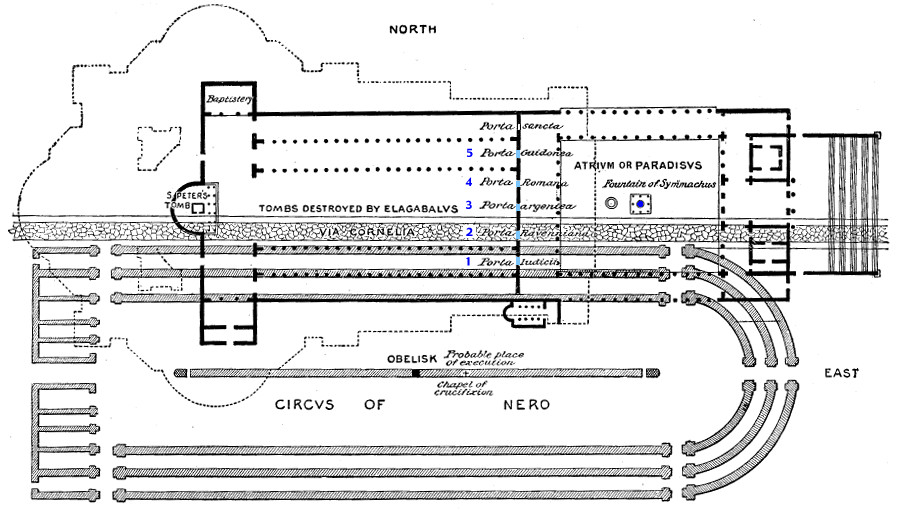Vatican Necropolis
Introduction
The Vatican Necropolis lies under the Vatican City, at depths varying between 5–12 meters below Saint Peter's Basilica. The Vatican Necropolis is not to be confused with the Vatican grottoes, the latter of which resulted from the construction of St. Peter's Church and is located on the ground level of the old Constantinian basilica.
Origins
The Vatican necropolis was originally a burial ground built on the southern slope of the Vatican Hill, adjacent to a circus built by Emperor Caligula. In accordance with the Roman law, it was forbidden to bury the dead within the city walls. For this reason, burial grounds sprang up along the roads outside of the city. One of these streets, the Via Cornelia, ran north along the Vatican hill.
Caligula's Circus

At the top of the circus that Caligula built, an Egyptian obelisk had been placed. The obelisk had been there since ancient times.
Construction of Old St. Peter

According to tradition, the Apostle Peter was martyred in the year 64 or 67 during the reign of Emperor Nero. Peter is said to be buried in the necropolis because of its proximity to the Circus of Nero where he was martyred. After the Edict of Milan the Emperor Constantine began construction of the first St. Peter's Church, also known as Old St. Peter's Basilica. At this time, the Roman necropolis was still in use. This is known because a coin was found inside an urn dating from 318 AD. During this time, the necropolis was protected by law and was untouchable. However, Emperor Constantine I decided to build a basilica, which would be located just above the supposed grave of the Apostle Peter. To obtain the necessary amount of flat area for the planned construction, Emperor Constantine I excavated part of the necropolis of the Vatican hill. This caused the necropolis to be filled with soil and building debris, with the exception of St. Peter's tomb, which was preserved.
Future Excavations


The Vatican sponsored archeological excavations (also known by their Italian name scavi) under Saint Peter's in the years 1940–1949 which revealed parts of a necropolis dating to Imperial times. The work was undertaken at the request of Pope Pius XI who wished to be buried as close as possible to Peter the Apostle. It is also home to the Tomb of the Julii, which has been dated to the third or fourth century. The necropolis was not originally one of the underground Catacombs of Rome, but an open air cemetery with tombs and mausolea.